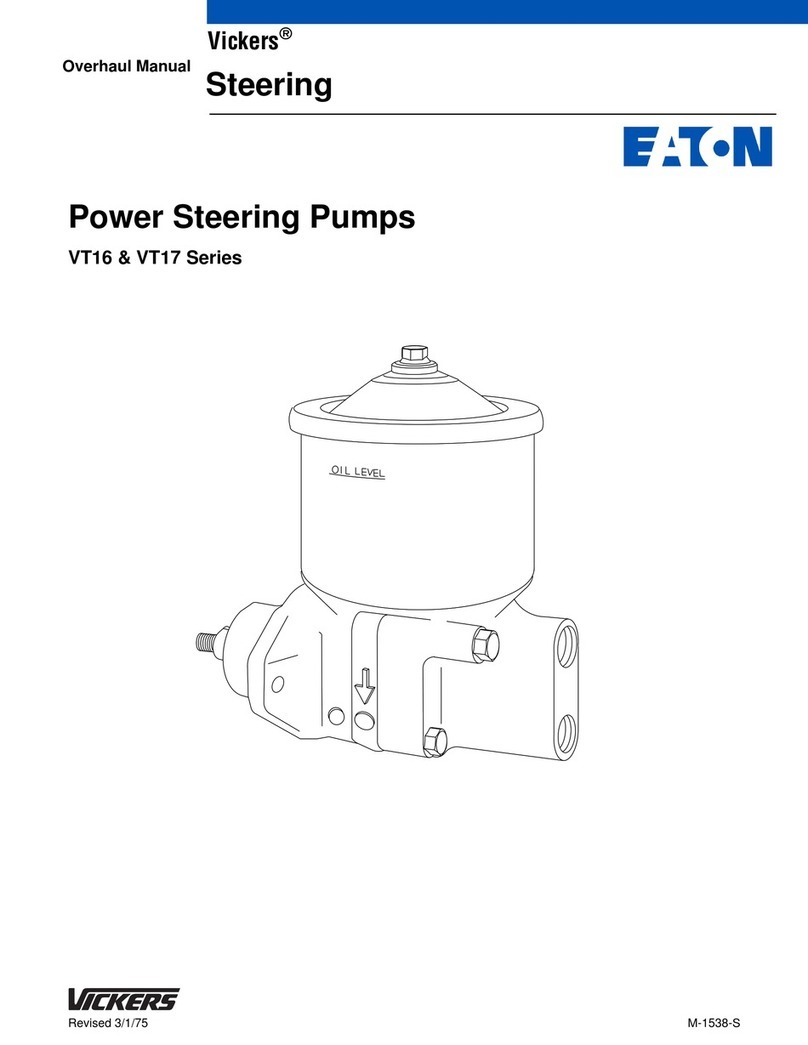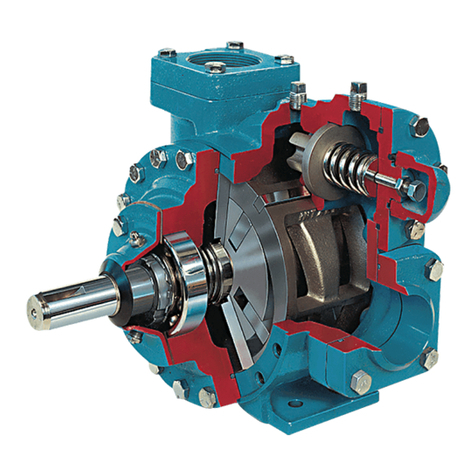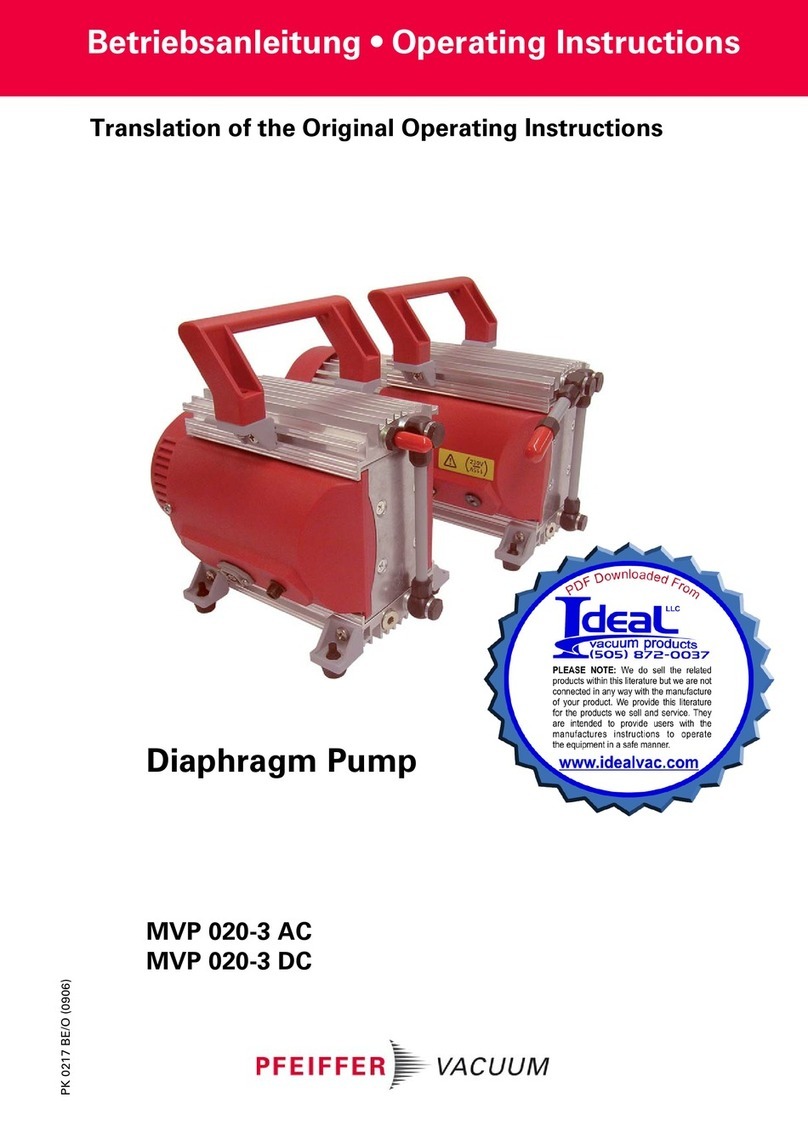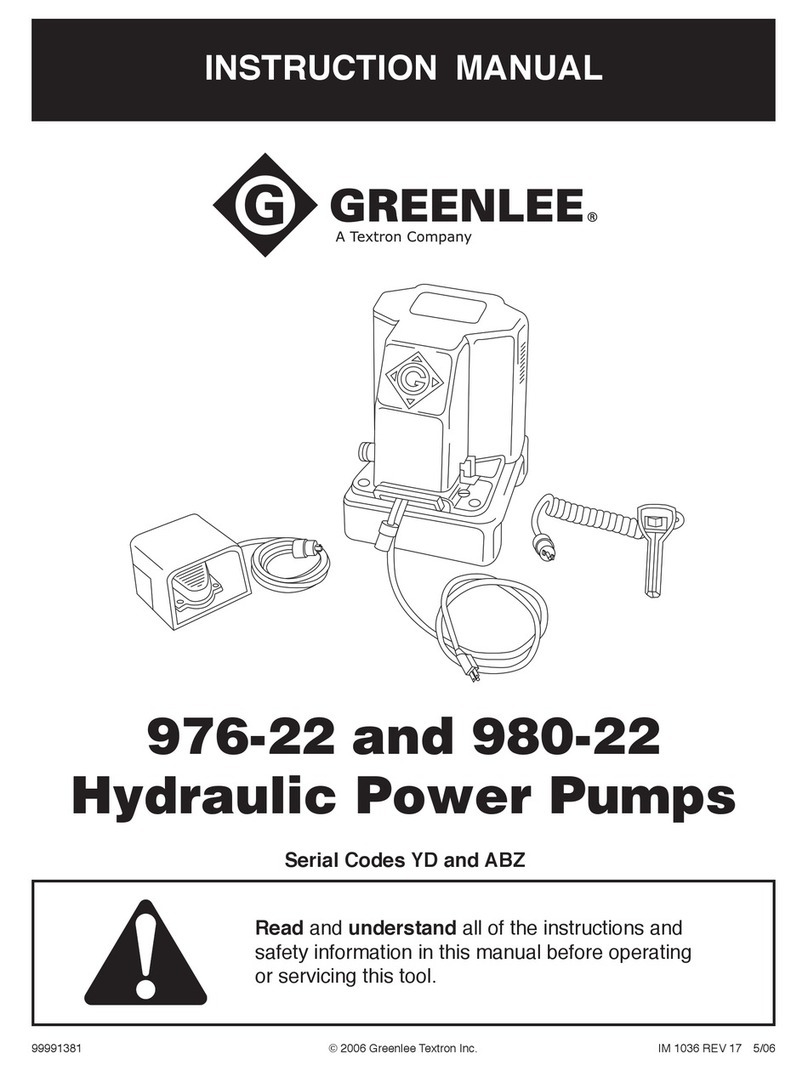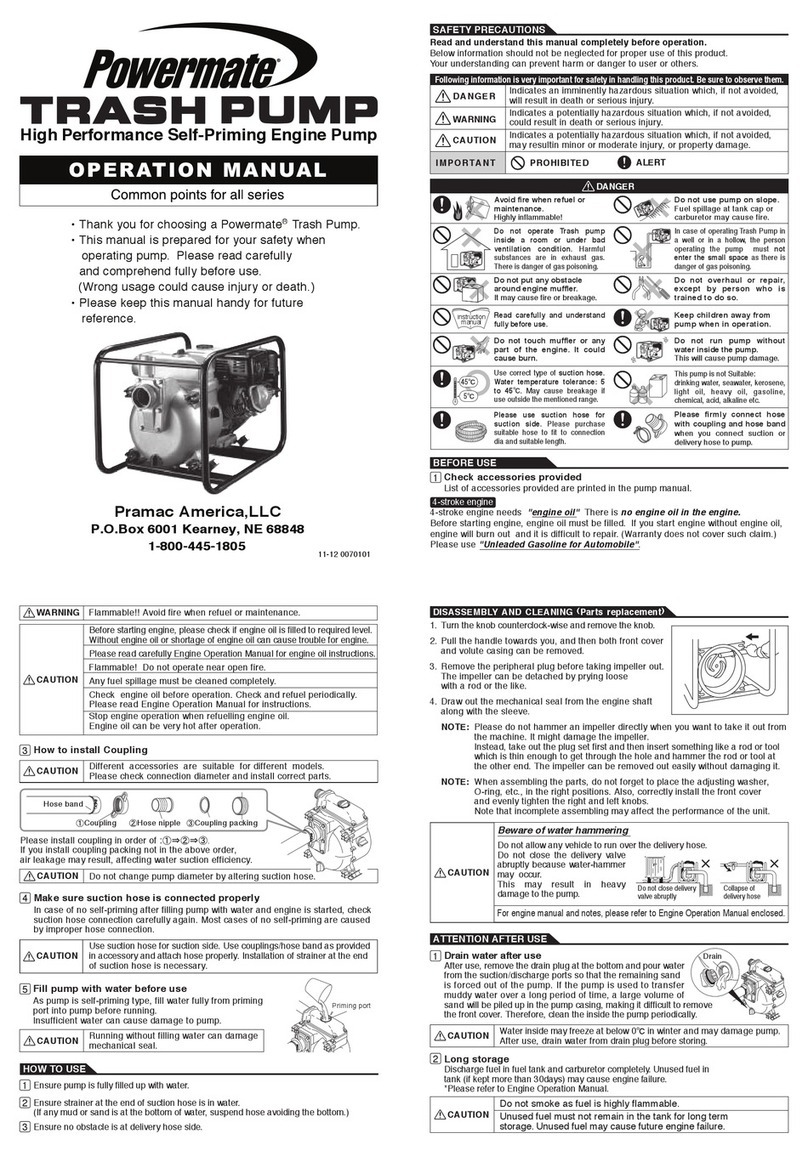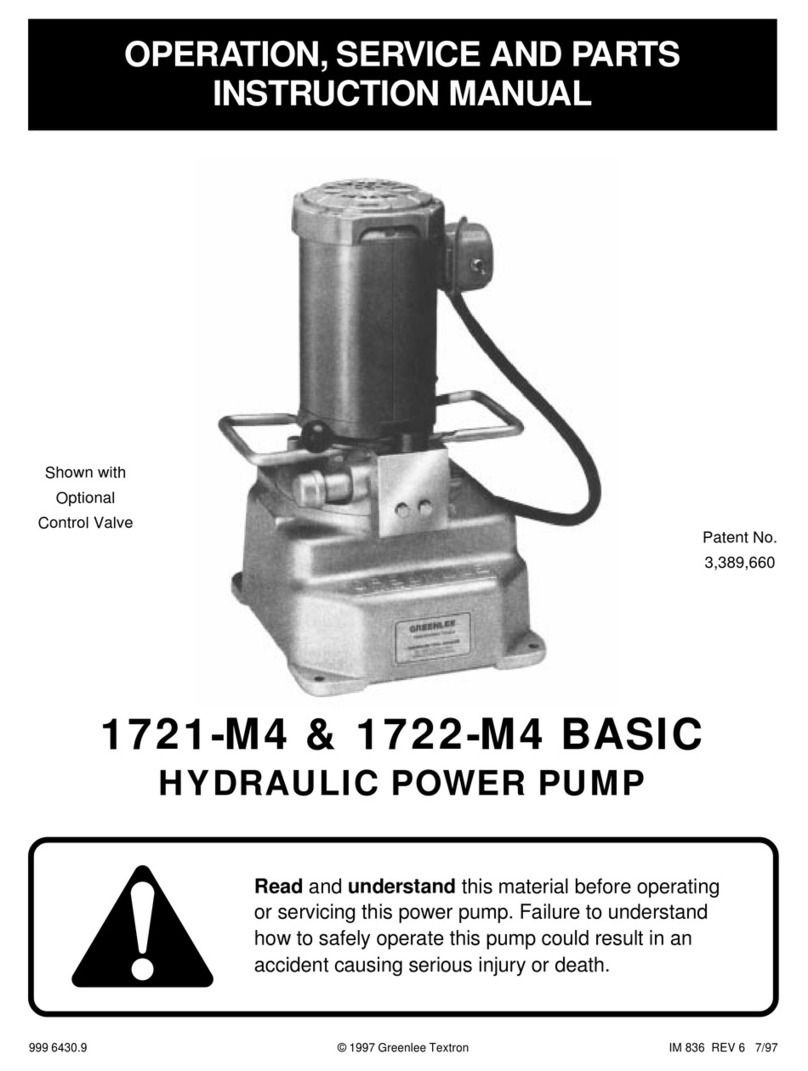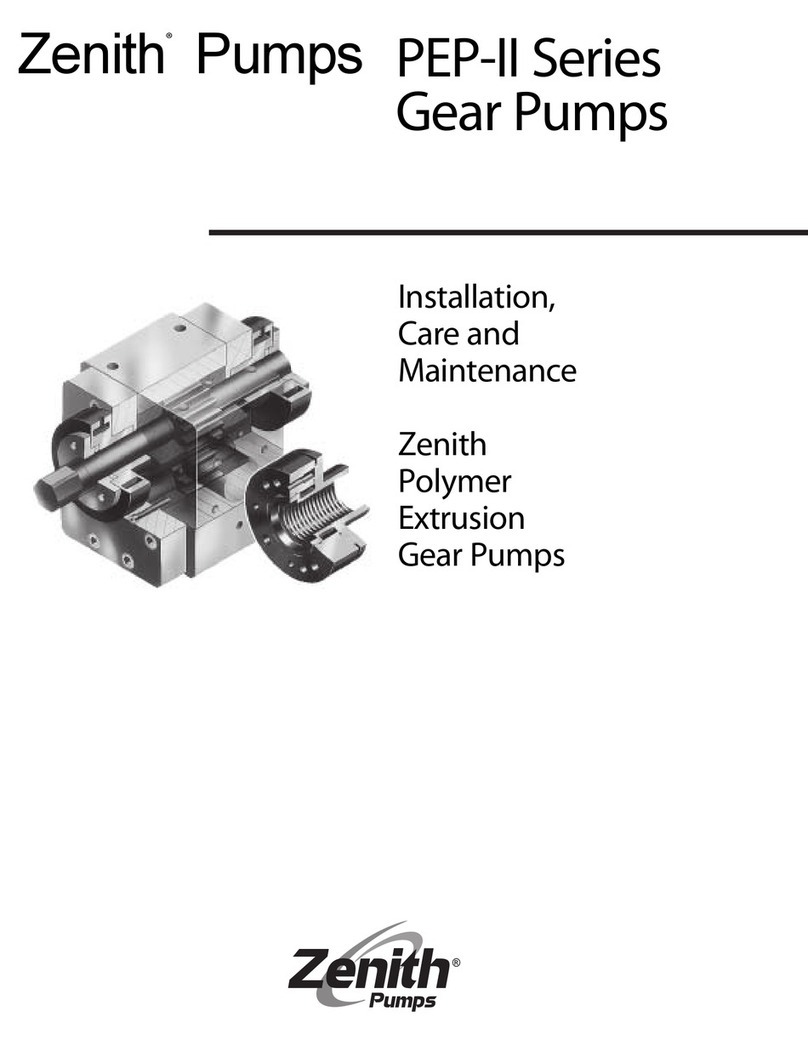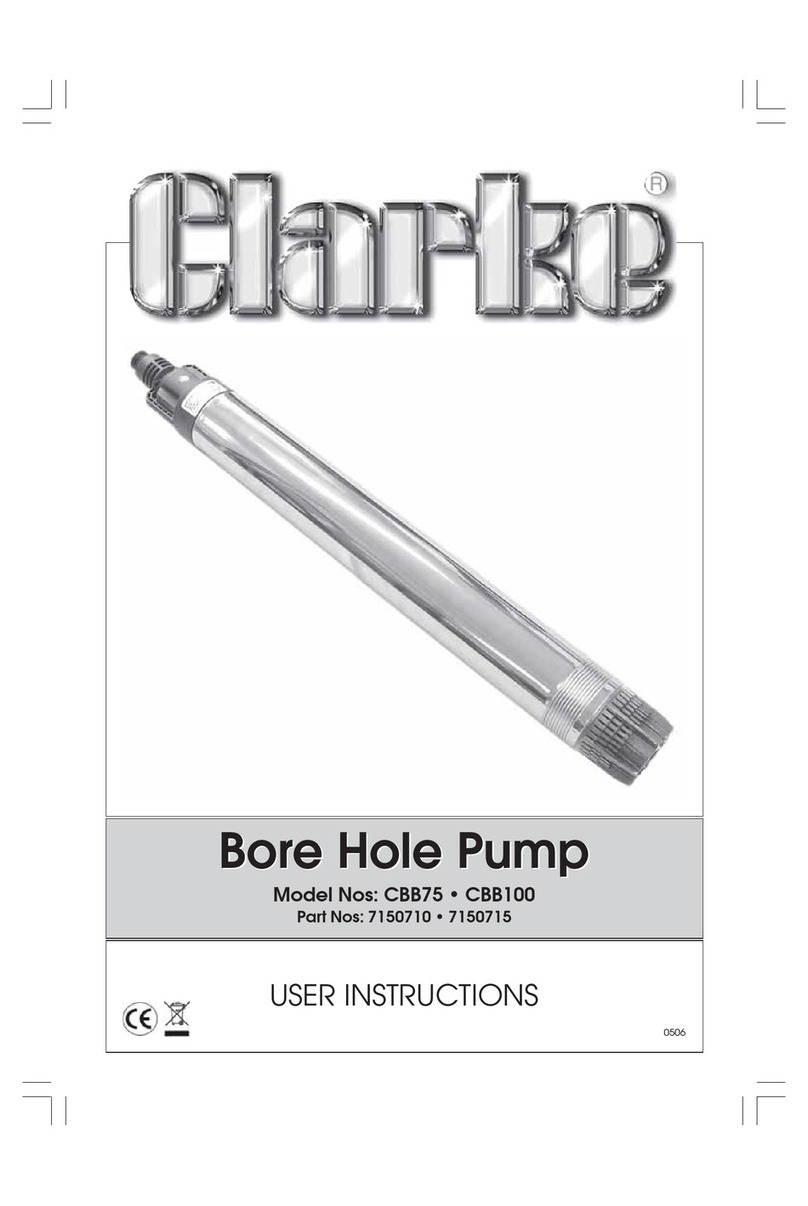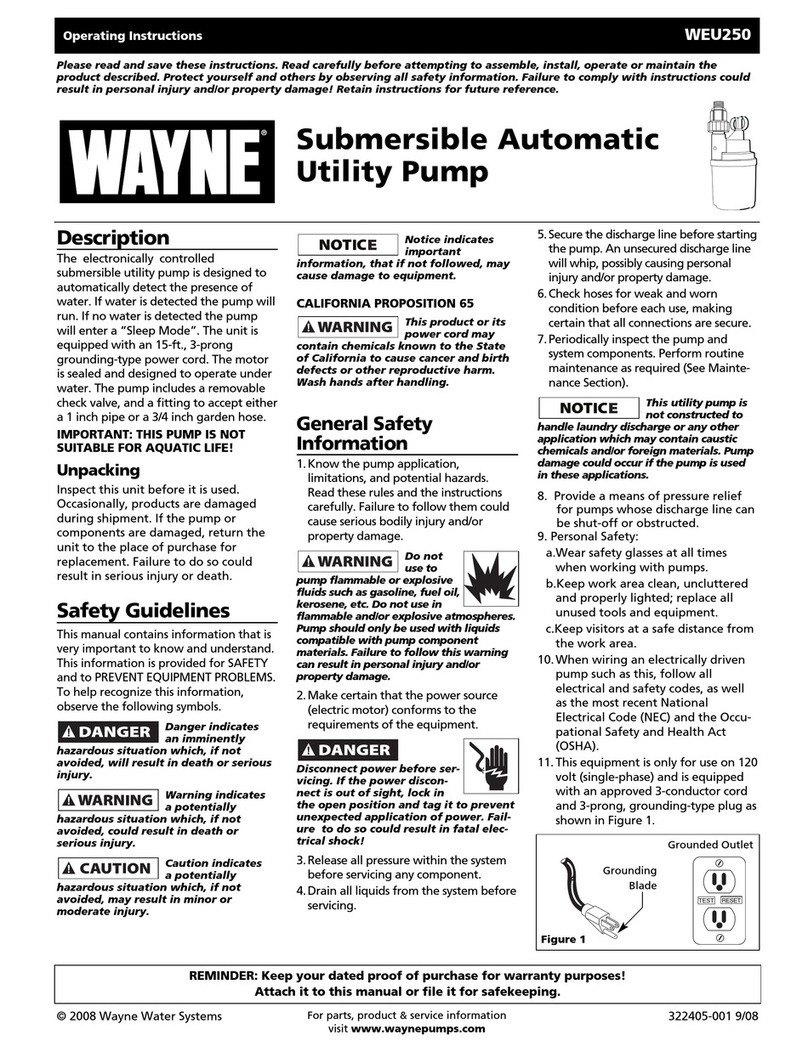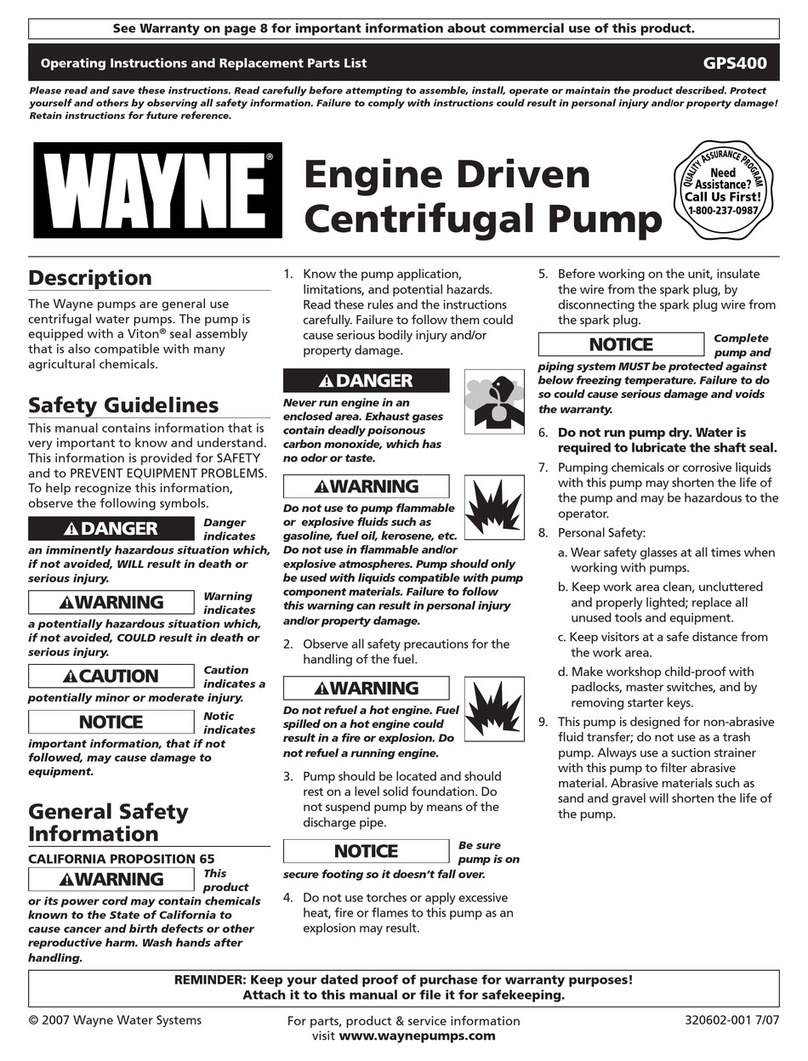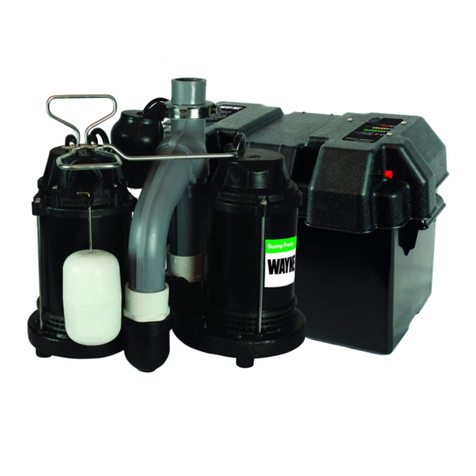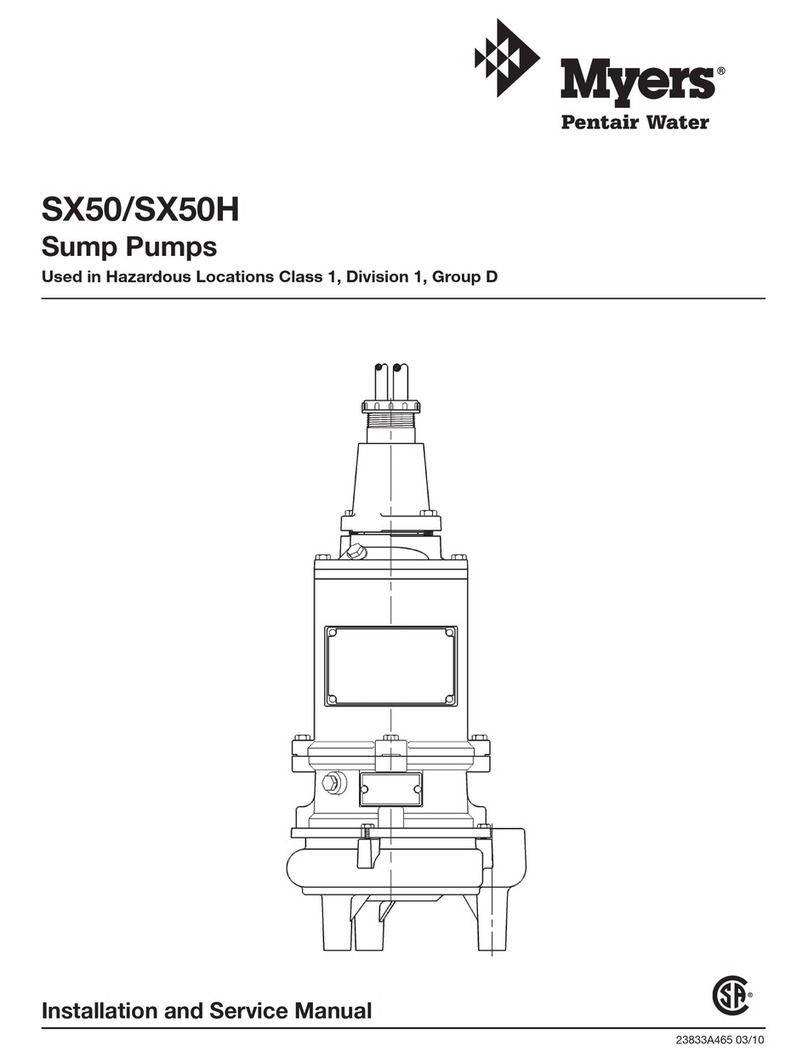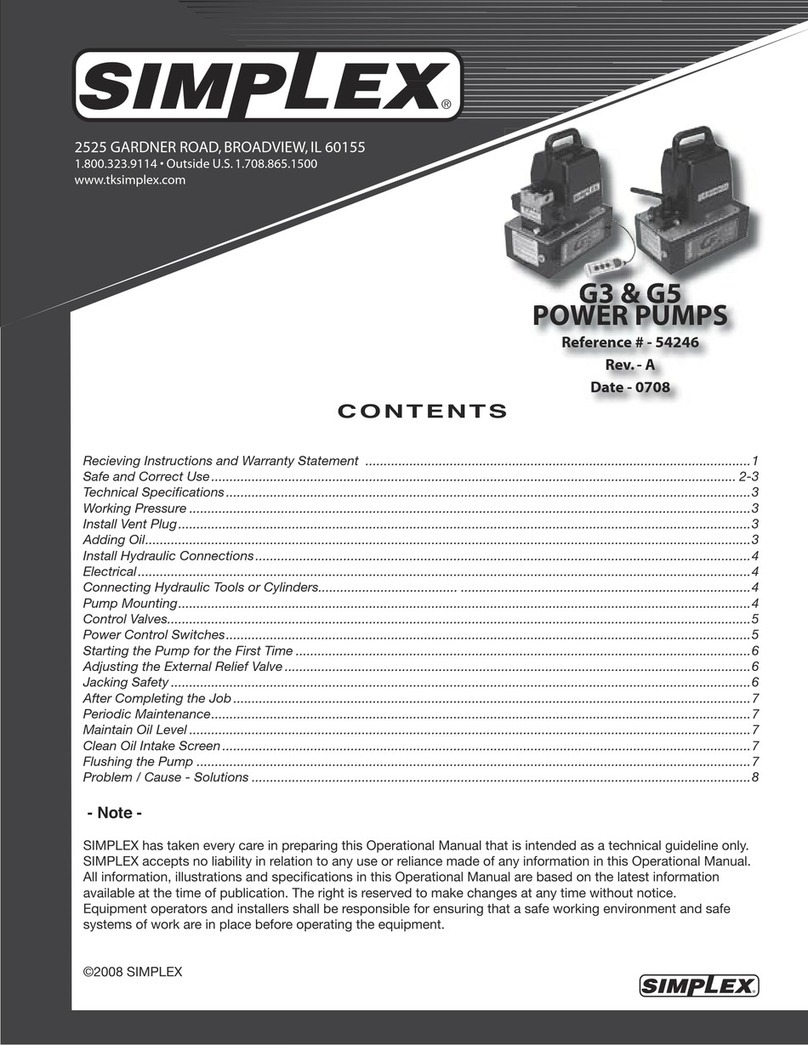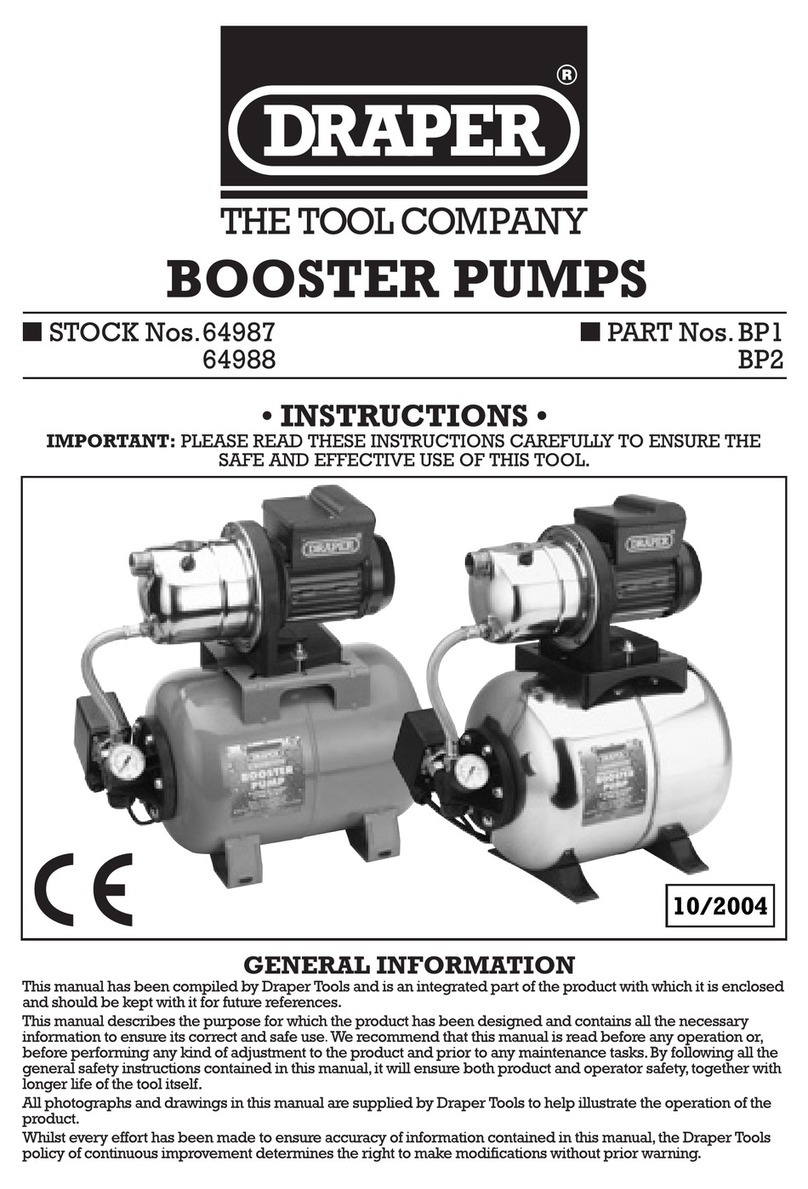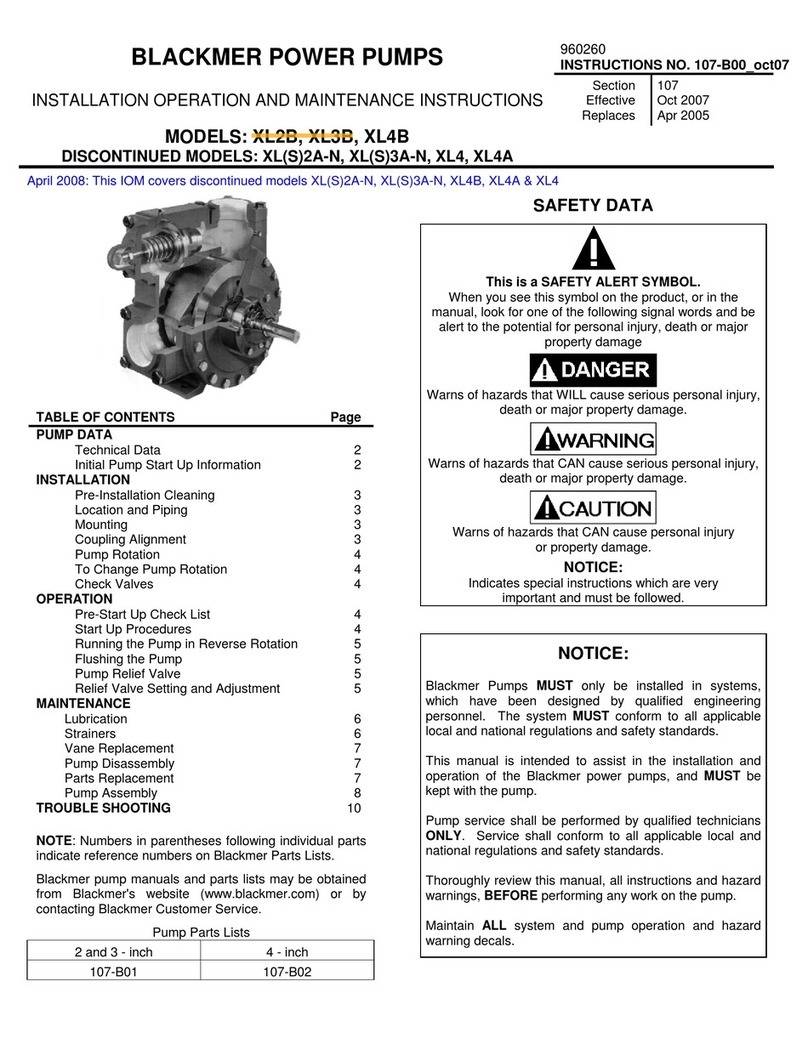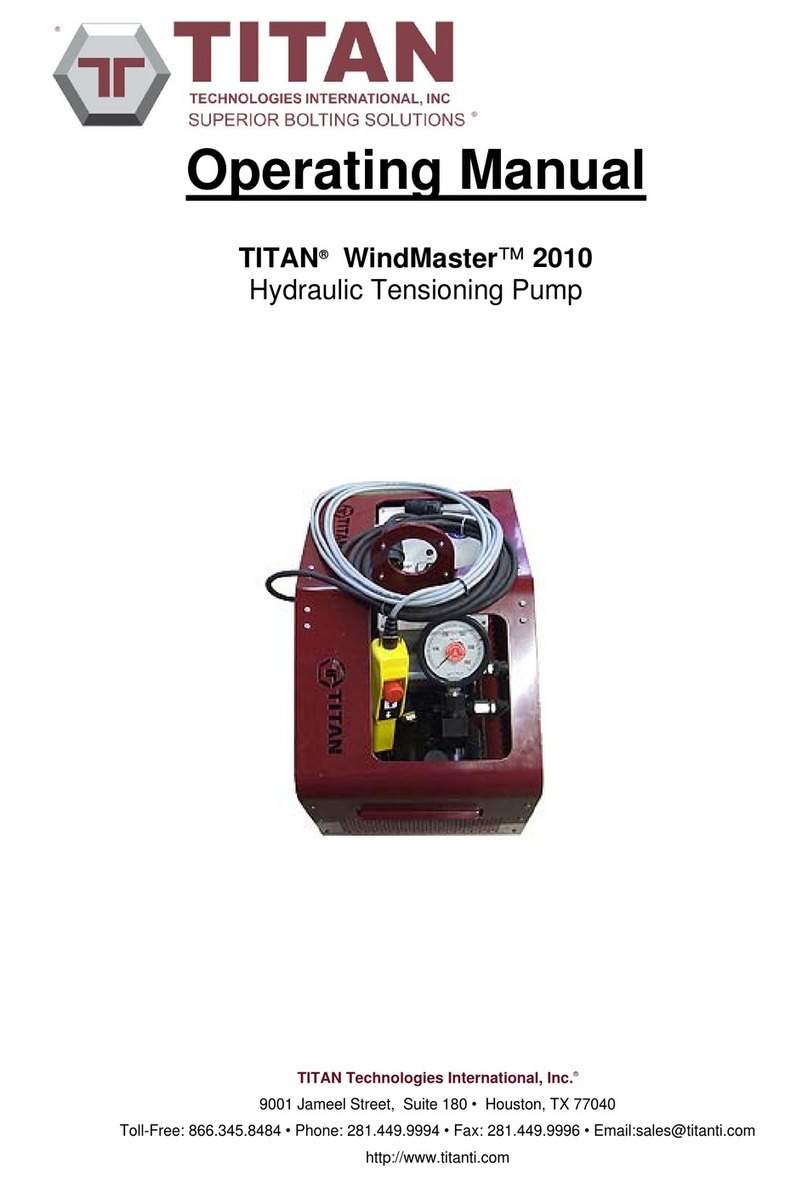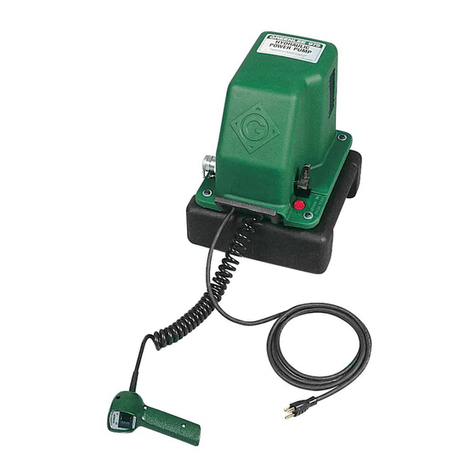
340107-001 9/10
REMINDER: Keep your dated proof of purchase for warranty purposes! Attach it to this manual or file it for safekeeping.
Description
Shallow well jet pumps are single stage
domestic water pumps designed for
pumping portable water in applications
where the water is located less than
25 feet vertically from the pump. A
pressure switch is a standard feature.
The shallow well pump can be mounted
to either a pre-charged, conventional
type or free standing pressure tank.
Unpacking
After unpacking the jet pump, carefully
inspect for any damage that may have
occurred during transit. Check for loose,
missing or damaged parts.
Safety Guidelines
This manual contains information that is
very important to know and understand.
This information is provided for SAFETY
and to PREVENT EQUIPMENT PROBLEMS.
To help recognize this information,
observe the following symbols.
Danger indicates an
imminently hazardous
situation which, if not avoided, will result
in death or serious injury.
Warning indicates a
potentially hazardous
situation which, if not avoided, could
result in death or serious injury.
Caution indicates a
potentially hazardous
situation which, if not avoided, may
result in minor or moderate injury.
Notice indicates
important
information, that if not followed, may
cause damage to equipment.
General Safety
Information
CALIFORNIA PROPOSITION 65
This product or its
power cord may contain
chemicals known to the State of California
to cause cancer and birth defects or other
reproductive harm. Wash hands after handling.
GENERAL SAFETY
1. Read the instruction manual included
with the product carefully. Be
thoroughly familiar with the controls
and the proper use of the equipment.
2. Know the pump application,
limitations and potential hazards.
Always install a
pressure relief valve
to match the system pressure rating and
the maximum flow rate.
Do not use to pump
flammable or
explosive fluids such as gasoline,
fuel oil, kerosene, etc. Do not use in
explosive atmospheres. Pump should
only be used with liquids compatible
with pump component materials. Failure
to follow this warning can result in
personal injury and/or property damage.
Disconnect power
and release all
pressure from the system before
attempting to install, service, relocate
or perform any maintenance. Lock the
power disconnect in the open position.
Tag the power disconnect to prevent
unexpected application of power.
Install a screen
around the inlet pipe
to prevent entrapment of swimmers.
3. Drain all liquids from the system
before servicing.
4. Secure the discharge line before
starting the pump. An unsecured
discharge line will whip and possibly
cause personal injury and/or property
damage.
5. Check hoses for weak or worn
condition before each use. Make
certain all connections are secure.
6. Periodically inspect pump and system
components. Perform routine
maintenance as required (See
Maintenance).
7. Personal Safety:
a. Wear safety glasses at all times
when working with pumps.
b. Keep work area clean, uncluttered
and properly lighted - replace all
unused tools and equipment.
c. Keep visitors at a safe distance
from work area.
d. Make the workshop childproof
use padlocks, master switches and
remove starter keys.
8. Do not pump chemicals or corrosive
liquids. Pumping these liquids
shortens the life of the pumps seals
and moving parts and will void the
warranty.
9. When installing pump, cover the
well to prevent foreign matter from
falling into well and contaminating
the water and damaging internal
mechanical pumping components.
10. Always test the water from the well
for purity before use. Check with local
health department for test procedure.
11. Complete pump and piping system
MUST be protected against below
freezing temperature. Freezing
temperatures could cause severe
damage and void the warranty.
12. Do not run the pump dry or damage
will occur and will void warranty.
Risk of electrical
shock. This pump is
designed for indoor installation only.
All wiring should be
performed by a
licensed or certified electrician.
13. For maximum safety, the unit should
be connected to a grounded circuit
equipped with a ground fault
interrupter device.
14. Before installing the pump, have the
electrical outlet checked by a licensed
or certified electrician to make sure
the outlet is properly grounded.
15. Make sure the line voltage and
frequency of electrical current supply
agrees with the motor wiring.
16. Do not attempt repairs to the electric
motor. All repairs to the motor
must be completed at a licensed or
certified electrical motor repair shop.
Do not touch an
operating motor.
Modern motors are designed to operate
at high temperatures.
17. Avoid kinking electrical cord and
protect from sharp objects, hot
surfaces, oil and chemicals. Replace
or repair damaged or worn cords
immediately.
Disconnect power
and release all
pressure from the system before
attempting to install, service, relocate
or perform any maintenance. Lock the
power disconnect in the open position.
Tag the power disconnect to prevent
unexpected application of power.
18. Keep fingers and foreign objects
away from ventilation and other
openings. Do not insert any objects
into the motor.
Risk of electric shock!
Never connect the
green (or green and yellow wire) to a
live terminal!
© 2010 WAYNE Water Pumps For parts, product & service information
visit www.waynepumps.com
Operating Instructions and Parts Manual Shallow well model systems
Jet Pump Water System
Please read and save these instructions. Read carefully before attempting to
assemble, install, operate or maintain the product described. Protect yourself
and others by observing all safety information. Failure to comply with
instructions could result in personal injury and/or property damage! Retain
instructions for future reference.

